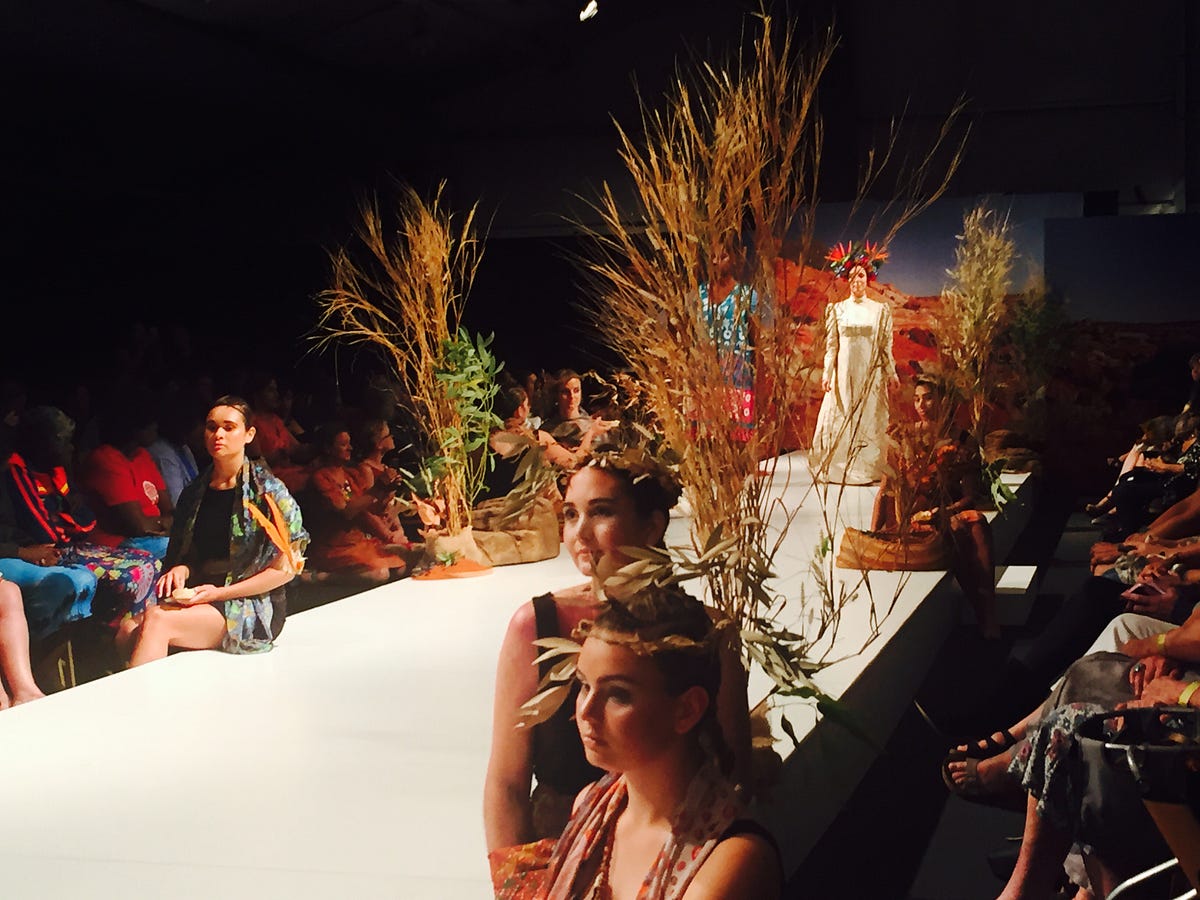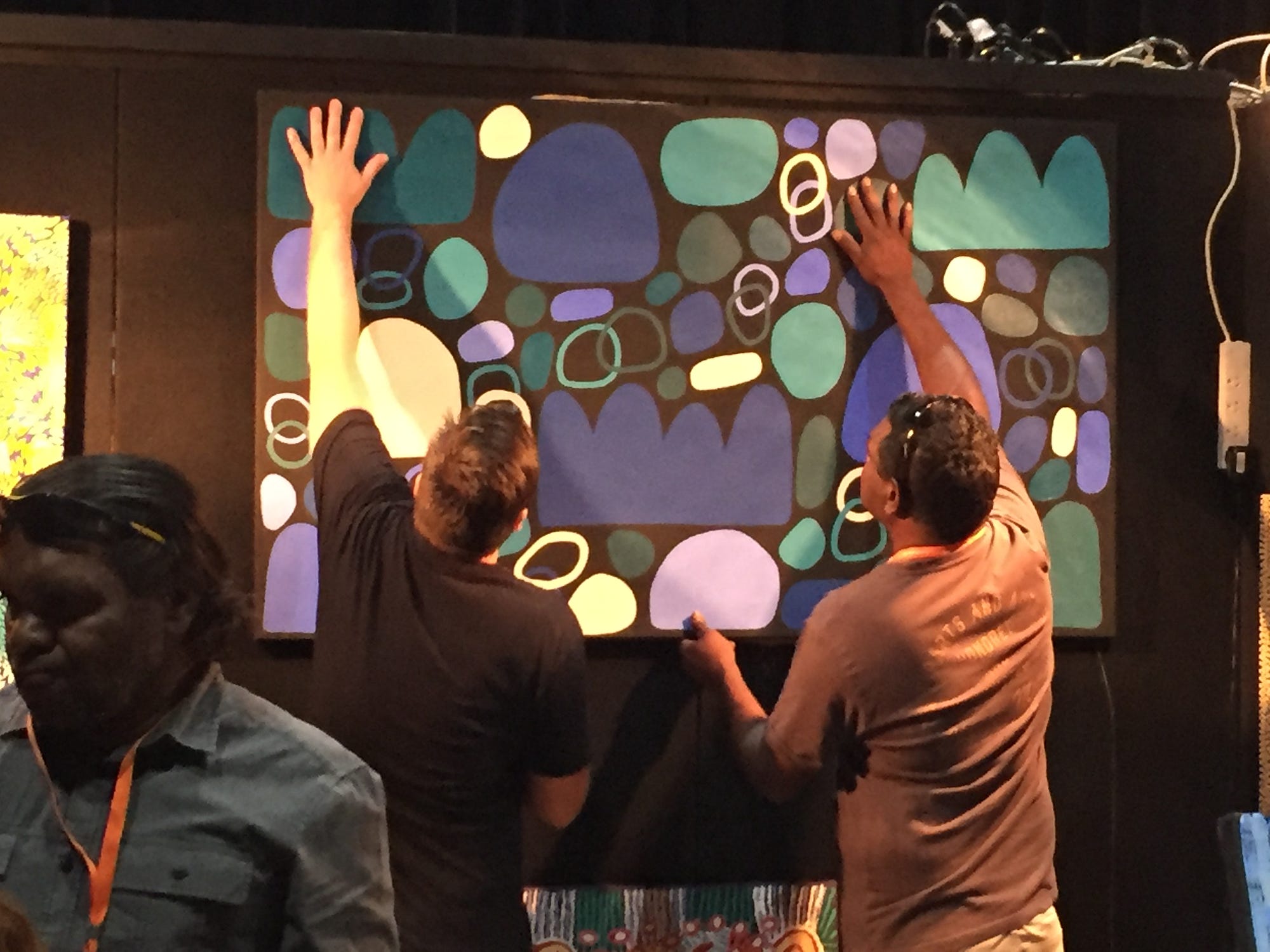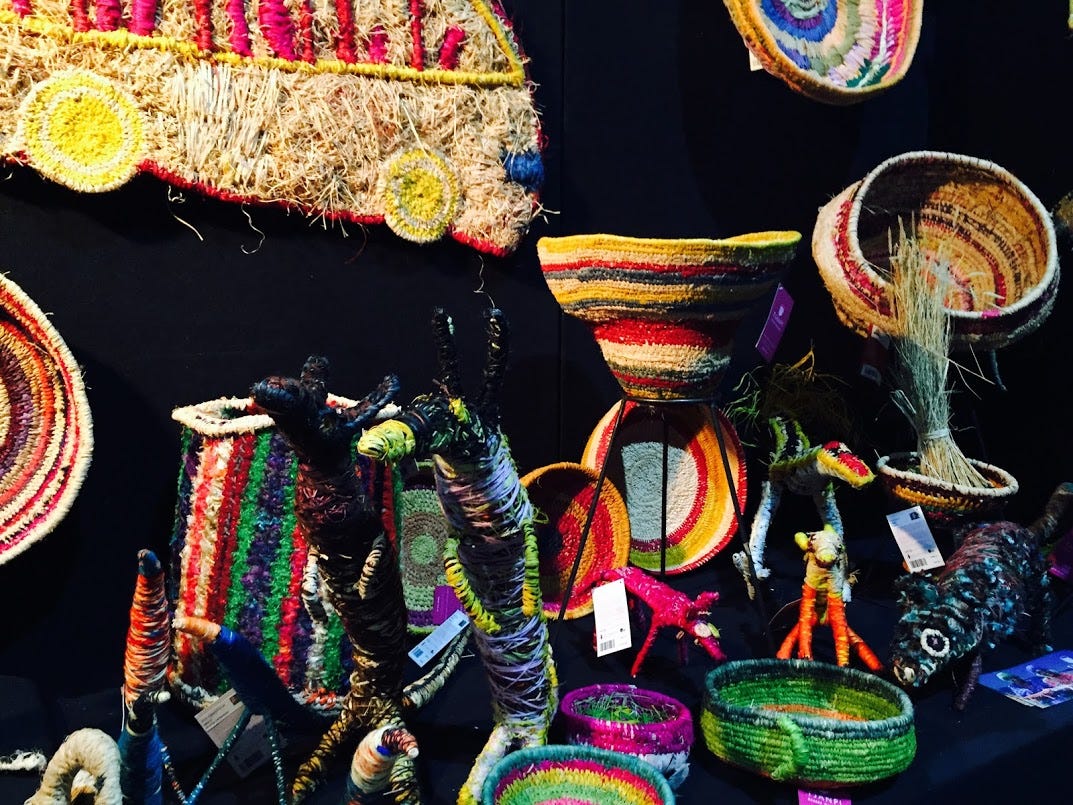These associated events intersect with what artists and community leaders such as Rover Thomas were telling people in the 1970’s, ‘to reinvigorate cultural practice’ . All forms of revitalisation are always interrelated; music, performance, fashion or art making. The best of each of these fields often when practitioners reconceptualise the work of others in exciting new ways, to see traditional symbolism and pattern making as recognised from bark paintings that depict ownership of country being worn by fashion models such as Magnolia, displayed on the catwalk to the soundtrack by Indigenous hip hop performers and DJ’s.
To see the social inclusiveness of including the Sistagirls who are a group of transgender women from the Tiwi Islands representing Tiwi fashion nearly bring the house down in applause from the local community, shows the stereotypes of Darwin as a rough and tumble mining town are largely out of date, and in reality, the community values as far more progressive than those seemingly coming from Canberra these days.
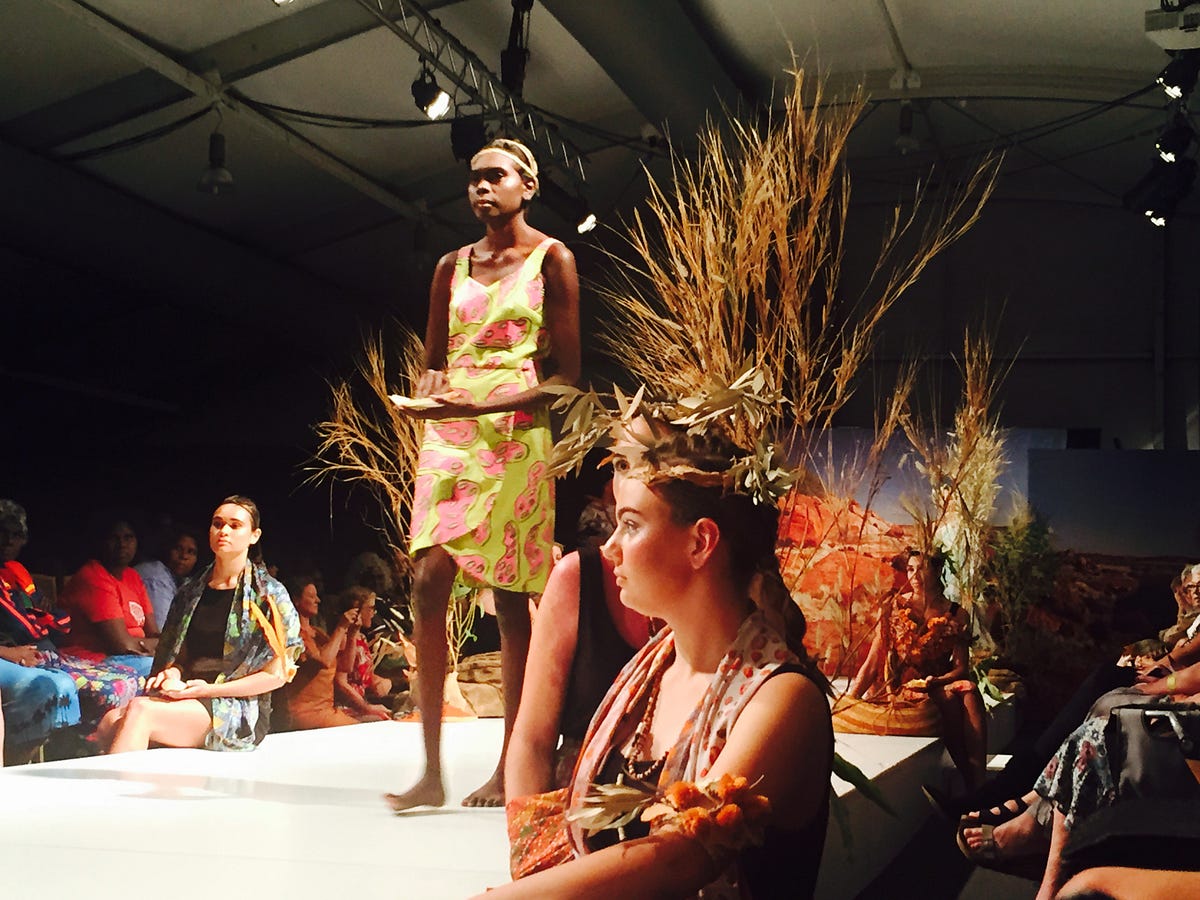
Model Magnolia at the DAAF Fashion Show 2017 “From Country to Couture” © Photo Matt Poll
The DAAF fashion show from country to couture showed many examples of the inter dimensional aspects of modern art making, inspiration from the ancestors is turned into artworks by artists, that artists work is printed on fabric, often by other indigenous artists employed by art centres, the fabrics are marketed to local and national Indigenous designers who transform the fabrics into outfits worn by the Indigenous models.
There may well need to be caution in the use particular designs as once they are on the open market they can potentially find themselves in use by non-indigenous agency with no understanding of the context they were made in but in many examples the abstract elements and elements of colour and design were no different to designs seen in other fashion styles. The one difference being that with ethical licencing arrangements being implemented and managed by Indigenous stakeholders that real money is put into the hands of some of the most economically marginalised people in Australia in a more regular process than the boom or bust of outright artwork sales.
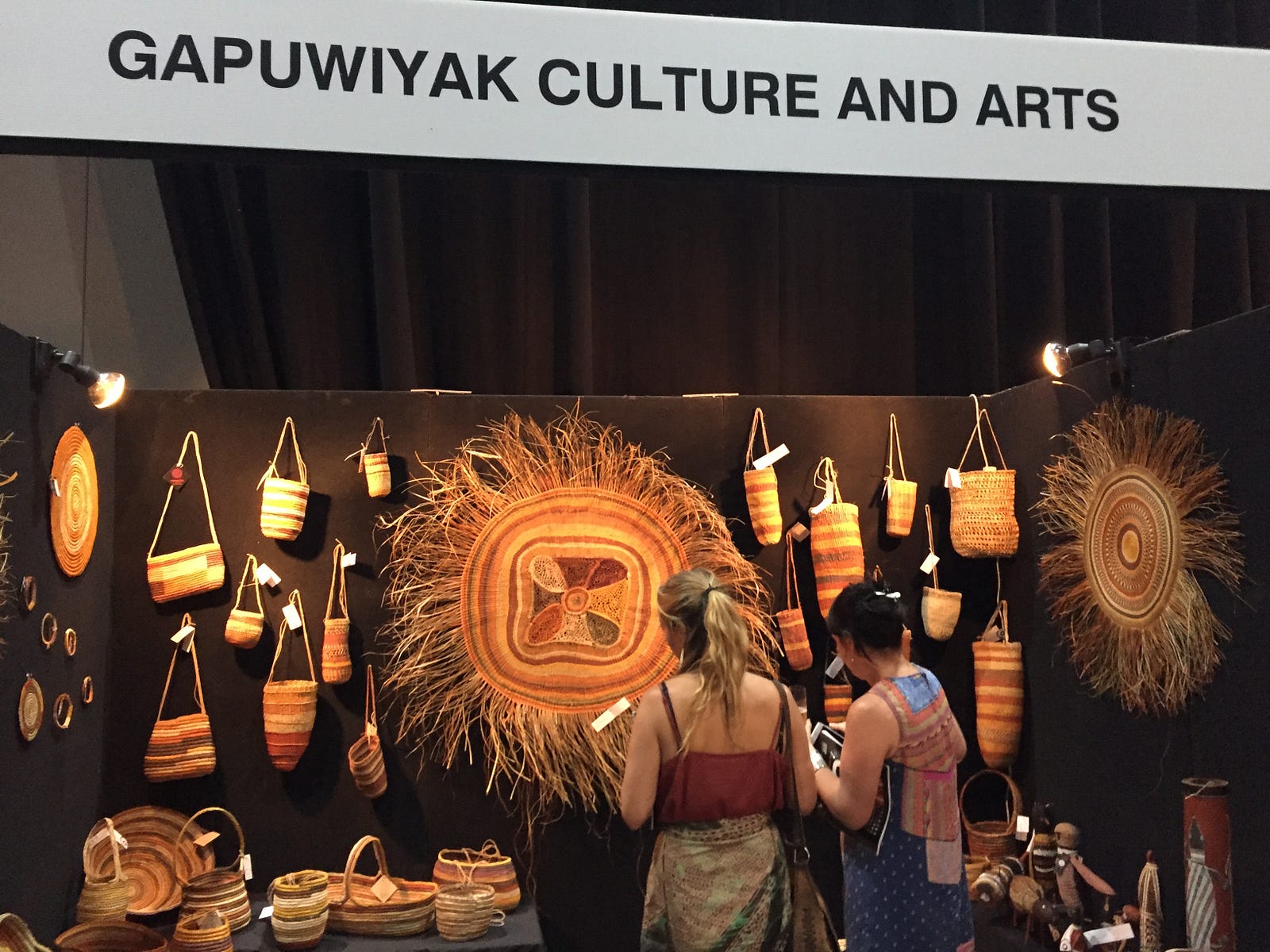
The Darwin art fair is an opportunity for artists and makers to learn from each other, for art centre managers to introduce their members to new ways of producing that do not need to refer to non-Indigenous examples. In remote and regional Australia so many artists work in isolation, which is not necessarily a bad thing, but it does limit the inspiration that comes from meeting other artists, seeing the ways audiences engage with yours and others work and the general atmosphere of innovation that art is best at producing when seen collectively. The audiences that attended over the three days were a mixture of local, international, connoisseur and new comer and finding a moment to catch the eye of staff attending to the stalls was a real challenge sometimes due to the popularity of particular items.
One of the more exciting developments on show at this year’s DAAF was many art centres are embracing the 21st century technologies of digital marketing and licencing, even outsourcing production to keep up with demand. As more indigenous owned business start feeding into the national supply chain network such as Supply Nation . Opportunities for community development and economic growth increase exponentially from arts into local business into community infrastructures that ideally will reduce remote and regional community reliance on old fashioned forms of assistance.
The DAAF and collectively asserting ownership of their inherited birthright in ways that were not even dreamed of a few short years ago. Social media as a platform for direct contact between artist and buyer opens up so many more opportunities — a common refrain from buyers is that meeting the artist definitely influences their decision making to purchase an artwork. Buyer can easily become ambassadors for the artist’s work — influencing their colleagues to purchase their own artworks and so on. The creativity and excitement for cultural integrity on display should also be bottled and sold as well. Behind the scenes, serious work such as gaining signatures for the Uluru statement and a concerted effort to lobby the federal government to get providers of fake artefacts out of airports and government (therefore community) owned business places quietly built momentum.
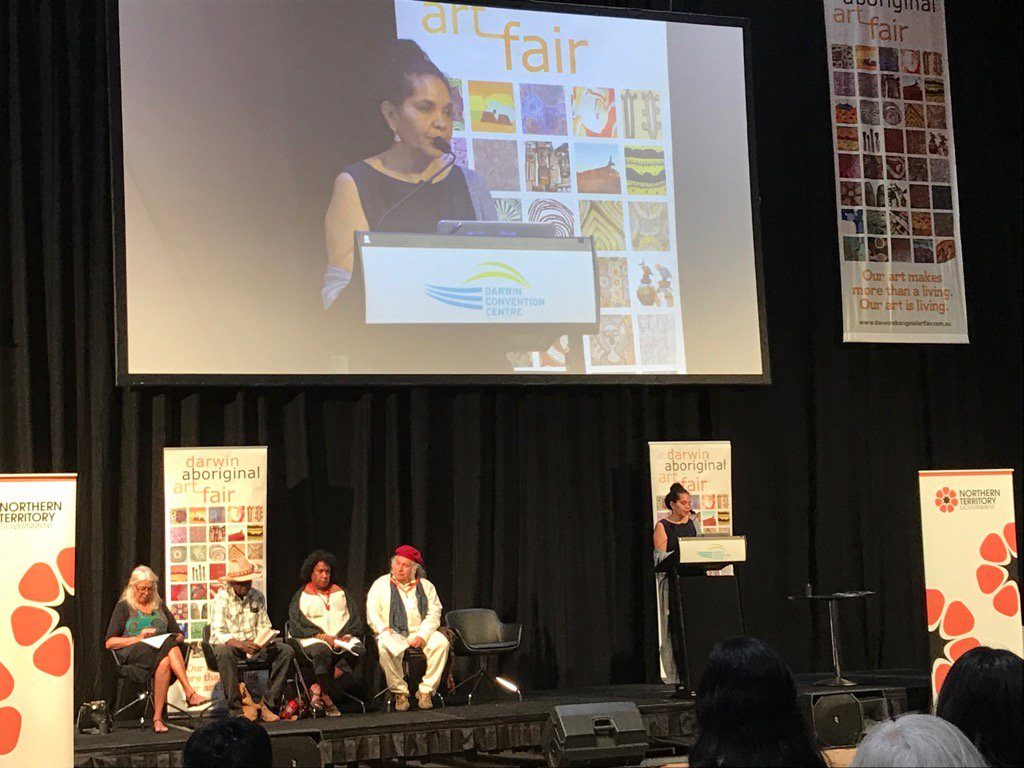
DAAF Panel Discussion 2017 © Photo Mary Durack
In contrast to the dusty old museums of the past that exhibited Aboriginal culture behind glass and behind a non-indigenous gatekeeper’s smokescreen, DAAF is perfect example of the 21st century living museum. An organism that thrives of participation, celebration and sharing of culture, a social space where community are visibility demonstrating the long held for ambitions of previous generations of artists and community leaders. Next stop the world.
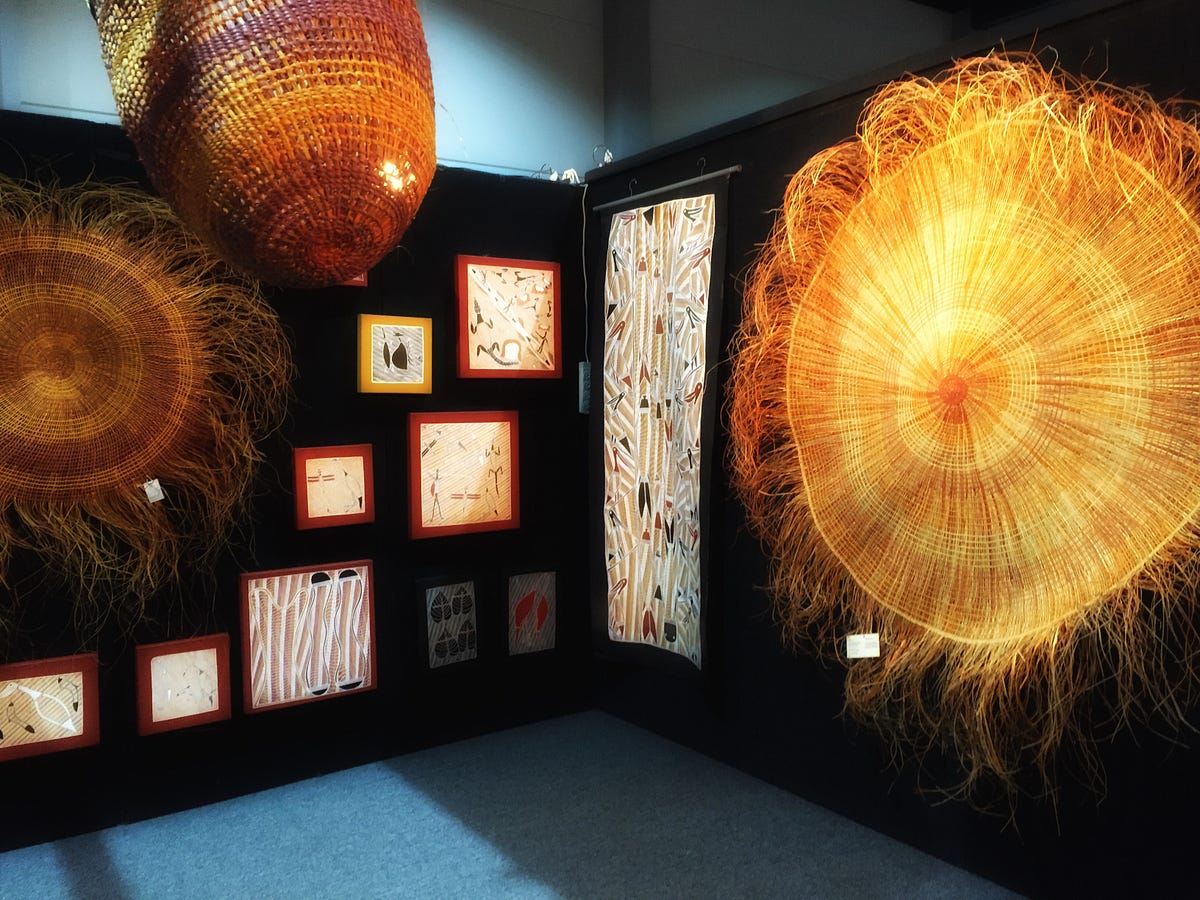
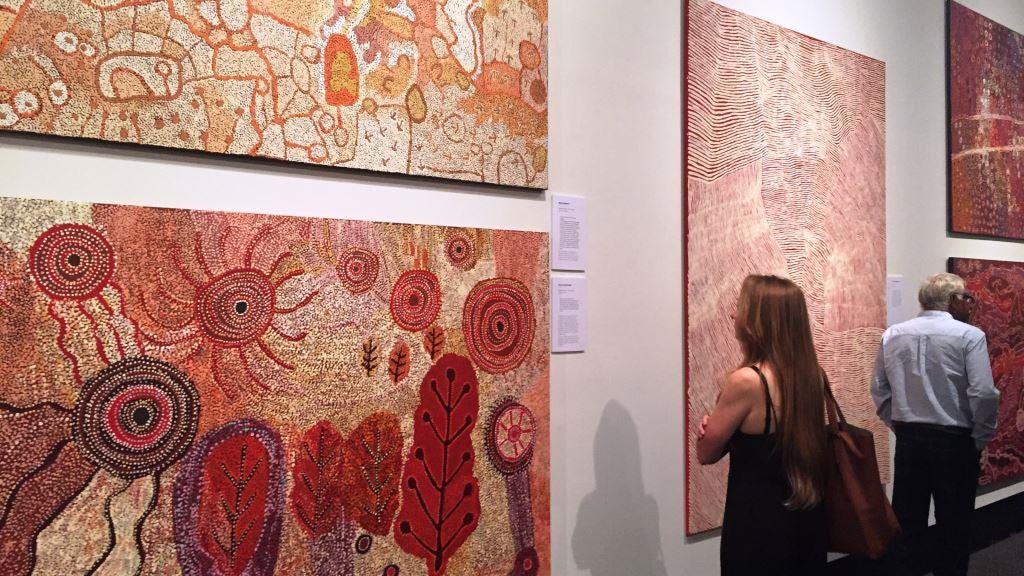 Salon des Refuses © Photo Matt Poll
Salon des Refuses © Photo Matt Poll